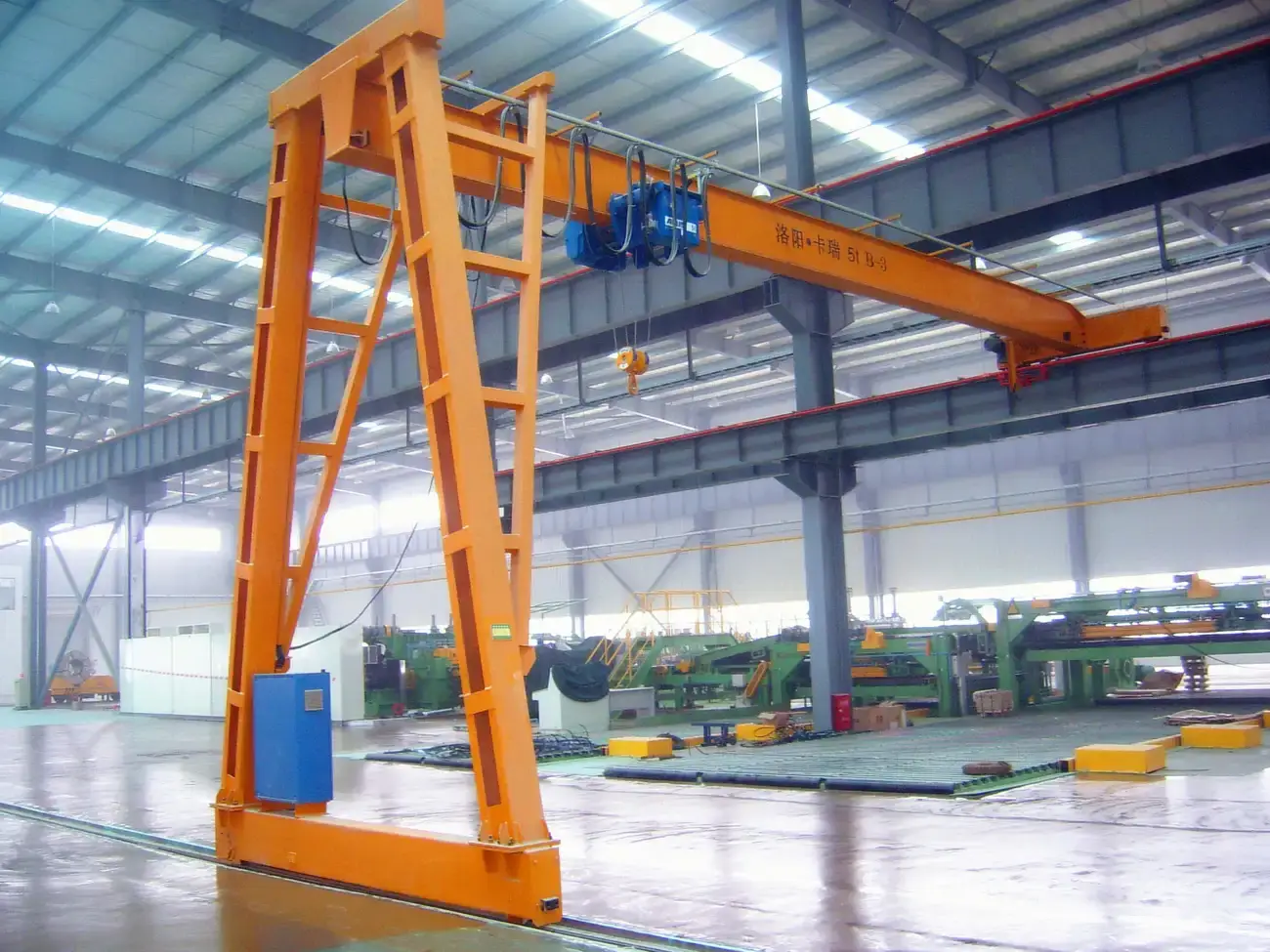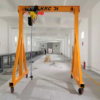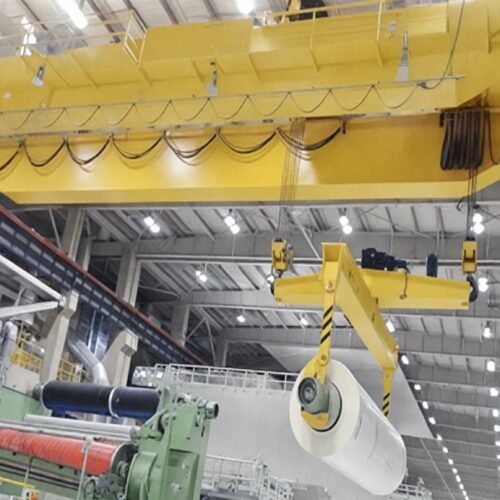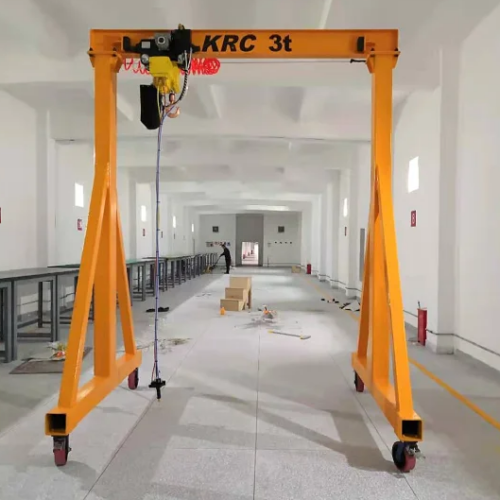single girder semi gantry crane Safety Certifications
Single girder semi gantry cranes are essential lifting solutions in various industrial environments. Ensuring the safety and reliability of these cranes is paramount. For these cranes, several crucial safety certifications and standards are typically pursued:
1. ISO 9001: This certification ensures that the manufacturer adheres to quality management systems, promoting consistent product quality and continuous improvement.
2. CE Marking: For cranes used within the European Economic Area (EEA), CE marking demonstrates compliance with relevant EU safety, health, and environmental requirements.
3. ASME B30.2: This standard specifically applies to overhead and gantry cranes in the United States, setting forth safety guidelines for design, inspection, testing, and maintenance.
4. FEM Standards (Fédération Européenne de la Manutention): These are European standards that provide detailed safety requirements and guidelines for the construction and operation of overhead cranes.
5. OSHA Compliance: In the United States, compliance with Occupational Safety and Health Administration (OSHA) standards ensures workplace safety and health regulations are met.
6. CSA Standards (Canadian Standards Association): For cranes operating in Canada, CSA B167-16 specifies requirements for the design, manufacture, installation, maintenance, and inspection of overhead traveling cranes.
7. EN 15011: This is a European standard that details specific criteria for the design and safety of gantry cranes, including single girder types.
8. GOST Certification: For cranes in Russia and surrounding countries, the GOST-R certification ensures adherence to the national safety and quality requirements.
Adherence to these certifications and standards ensures that single girder semi gantry cranes are designed, constructed, and maintained with the highest safety and quality standards, thereby protecting workers and property while enhancing operational efficiency. Regular audits and maintenance further ensure that the crane remains in optimal working condition.
List Reference Technical Parameters of “single girder semi gantry crane”
A single girder semi gantry crane is a versatile lifting machine used in various industrial settings. Here are the key technical parameters to consider:
1. Load Capacity: The maximum weight the crane can lift, typically ranging from 1 to 50 tons.
2. Span: The horizontal distance between the rails, usually between 5 to 30 meters.
3. Lifting Height: The vertical distance the hook can travel, generally from 3 to 25 meters.
4. Lifting Speed: The speed at which the crane can lift loads, commonly between 0.8 to 8 meters per minute.
5. Trolley Speed: The speed at which the trolley can move horizontally along the girder, ranging from 2 to 20 meters per minute.
6. Crane Travel Speed: The rate at which the entire crane moves along the rails, typically between 5 to 40 meters per minute.
7. Power Supply: The crane’s power requirements, often 380V/50Hz/3-phase or as per local standards.
8. Duty Class: Indicates the crane’s operational frequency and load intensity; commonly classified under FEM, ISO, or other standards.
9. Control Mode: Options include pendant control, remote control, or cabin control, depending on operational convenience.
10. Protection Level: Environmental protection levels such as IP54 or higher, indicating dust and water resistance.
11. Material and Construction: Usually made of high-quality steel, ensuring durability and strength.
12. Operational Environment: Suitable for various conditions, including temperature ranges from -20°C to +40°C and indoor or outdoor use.
13. Safety Features: Includes overload protection, emergency brakes, limit switches, and anti-collision systems.
These parameters help in selecting and designing a crane that meets specific operational requirements, ensuring efficiency and safety in material handling tasks.
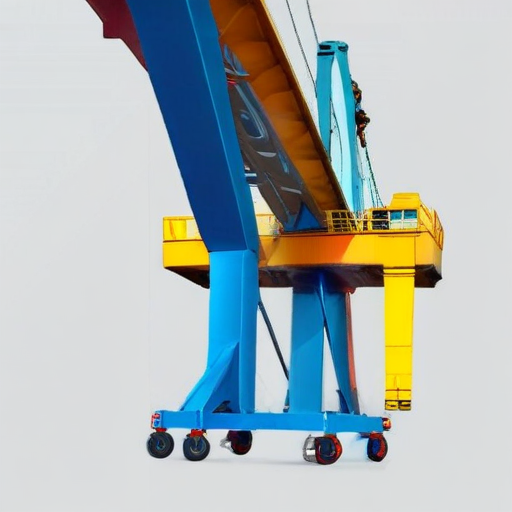
List Product features of “single girder semi gantry crane”
A single girder semi-gantry crane is an efficient lifting solution designed for a variety of applications, from workshops to warehouses. Here are key product features:
1. Single Girder Design: The crane features a single girder structure, offering a balanced and lightweight design that is cost-effective and suitable for lighter to moderate loads.
2. Semi Gantry Configuration: One side of the crane runs on an elevated runway beam, while the other side moves on a track at ground level, maximizing workspace area and minimizing the need for a full-length runway structure.
3. Load Capacity: Typically designed to handle loads ranging from 1 to 50 tons, suitable for diverse lifting needs.
4. Span Length: Customizable span length according to the specific requirements of the installation site, offering flexibility in application.
5. Height of Lift: Adjustable lifting height to meet the operational demands of various industries.
6. Operational Efficiency: Equipped with efficient electric hoists, enhancing precision, control, and safety during operation.
7. Safety Features: Includes limit switches, overload protection, emergency stop systems, and anti-collision devices to ensure safe and reliable operations.
8. Easy Installation & Maintenance: Modular design facilitates quicker installation and simpler maintenance procedures.
9. Versatility: Suitable for indoor or outdoor applications across various industries such as manufacturing, logistics, and construction.
10. Controls: Available with both manual and remote control systems for flexible operation.
11. Durable Construction: Built from high-quality materials such as steel to ensure longevity and robustness under different working conditions.
12. Customizable Options: Possible to tailor various specifications, such as lifting capacity, span, and lifting height according to specific project requirements.
13. Cost-Efficient: Generally more affordable compared to double girder or full gantry cranes due to its simpler design, making it a cost-effective solution for many businesses.
14. Mobility: Can be designed with wheels at the base for enhanced maneuverability within the workspace.
15. Environmental Adaptability: Suitable for different environmental conditions, with optional weatherproofing for outdoor use.
These features make the single girder semi gantry crane a versatile and practical choice for lifting and transporting materials efficiently in a variety of settings.
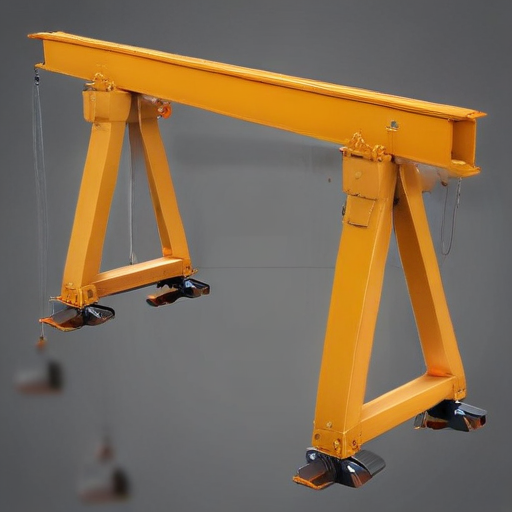
List Various Types of “single girder semi gantry crane”
Single girder semi gantry cranes are versatile lifting systems used in various industries. There are several types designed to meet specific operational needs. Here are some of the key types:
1. Manual Single Girder Semi Gantry Crane:
– Operated by hand, suitable for light-duty applications.
– Lower cost and easier installation.
2. Electric Single Girder Semi Gantry Crane:
– Equipped with electric motors for hoisting and travel.
– Best for handling heavier loads and providing more efficiency.
3. Portable Single Girder Semi Gantry Crane:
– Can be moved to different locations within a facility.
– Ideal for areas with changing workflows or temporary needs.
4. Fixed Single Girder Semi Gantry Crane:
– Permanently installed on a specific site.
– More stable and suited for heavy, repetitive tasks.
5. Adjustable Single Girder Semi Gantry Crane:
– Features adjustable height or span.
– Provides flexibility for different lifting height requirements.
6. Low-Headroom Single Girder Semi Gantry Crane:
– Designed for environments with height restrictions.
– Optimizes space usage and maximizes lift height.
7. Outdoor Single Girder Semi Gantry Crane:
– Weather-resistant and suitable for outdoor use.
– Often used in shipping yards, construction sites, and storage areas.
8. Indoor Single Girder Semi Gantry Crane:
– Optimized for indoor environments.
– Commonly found in factories, warehouses, and workshops.
Each type of single girder semi gantry crane is tailored to specific operational contexts, ensuring efficiency and effectiveness in various industrial applications.
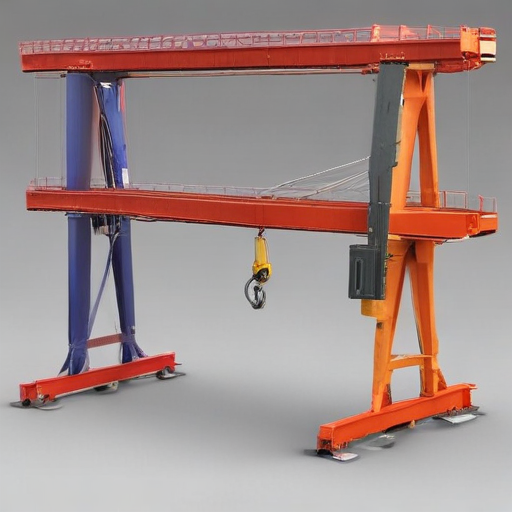
List Application of “single girder semi gantry crane”
A single girder semi gantry crane is a versatile and efficient lifting solution used in various industrial and commercial applications. Key applications include:
1. Warehouses and Storage Facilities:
– Facilitates the movement and organization of heavy goods and materials, optimizing space and improving workflow efficiency.
2. Manufacturing Plants:
– Assists in the production process by enabling the swift transfer of components and finished products between different areas or workstations.
– Enhances safety by reducing the need for manual lifting of heavy objects.
3. Shipyards and Ports:
– Essential for loading and unloading cargo from ships, ensuring fast and efficient handling of goods, thereby expediting the shipping process.
4. Construction Sites:
– Aids in the transportation of construction materials like steel beams, concrete blocks, and other heavy items, streamlining construction operations.
5. Rail Yards:
– Used to handle containers, heavy equipment, and rail components, improving the efficiency of railway operations.
6. Automotive Industry:
– Supports the assembly line process by lifting and positioning large car components, contributing to smoother production flow.
7. Maintenance and Repair Facilities:
– Allows for the easy movement of large machinery and equipment that require maintenance, repair, or inspection.
8. Aerospace Industry:
– Essential for handling large aircraft components and tooling equipment, ensuring precision and safety in manufacturing and maintenance processes.
9. Energy Sector:
– Useful in power plants and renewable energy facilities for handling heavy components like turbines, generators, and solar panels.
10. Mining Operations:
– Facilitates the handling of raw materials and mining equipment, improving operational efficiency.
By incorporating a single girder semi gantry crane into these applications, industries can enhance their material handling capabilities, promote safer working conditions, and improve overall operational efficiency.
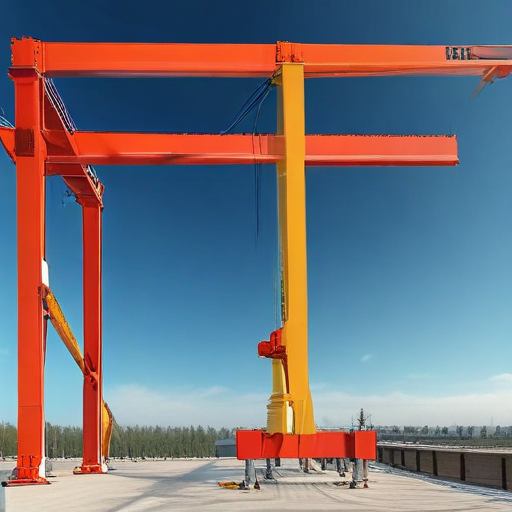
List Buyer Types of “single girder semi gantry crane”
Single girder semi gantry cranes are versatile lifting solutions used in various industries, and their buyers can generally be categorized into several types:
1. Manufacturing Plants:
– Automotive: For handling automotive parts and assembly line operations.
– Aerospace: To assist in the fabrication and assembly of large aircraft sections.
– Steel and Metal Fabrication: For moving heavy metal sheets and manufactured components.
2. Warehouses and Distribution Centers:
– Enhances material handling capabilities, facilitating the organization and movement of inventory.
3. Construction Companies:
– Often used in prefabrication yards or for lifting construction materials at job sites.
4. Shipyards and Ports:
– For loading and unloading goods, as well as maintenance of ships.
5. Maintenance and Repair Workshops:
– Used to lift and transport heavy machinery and components for repair.
6. Power Stations and Utility Companies:
– Vital for lifting heavy equipment during installation, maintenance, and operations within power plants.
7. Rail Industry:
– Used in railcar and locomotive maintenance facilities for lifting heavy parts.
8. Waste Management and Recycling:
– For handling large waste containers and recycling materials efficiently.
Buyers from these categories appreciate single girder semi gantry cranes for their efficiency, flexibility, space optimization, and cost-effectiveness. Their ability to operate in spaces where full gantry cranes are impractical makes them a sought-after equipment across diverse industries.
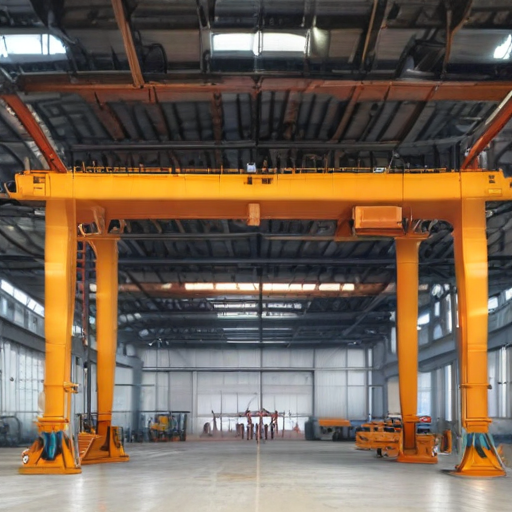
List “single girder semi gantry crane” Project Types for Different Industries
Single girder semi-gantry cranes are versatile and serve a variety of industries, each benefiting from their specific capabilities. Here are some project types for different industries:
1. Manufacturing Industry
– Assembly Lines: Facilitates the movement of large parts between stations.
– Tool and Die Fabrication: Handles heavy dies and molds with precision.
– Automotive Manufacturing: Shifts car parts and engines seamlessly through production stages.
2. Construction Industry
– Material Handling: Moves heavy construction materials such as steel beams and concrete blocks.
– Precast Concrete: Assists in the handling of large precast sections.
3. Warehousing and Logistics
– Bulk Storage: Efficiently moves large quantities of goods.
– Loading and Unloading: Assists in quick transfer of materials from trucks to storage.
4. Aerospace Industry
– Component Assembly: Essential for positioning large components with high precision.
– Maintenance: Used in maintenance bays for heavy aircraft parts.
5. Metals Production and Fabrication
– Steel Plants: Handling and processing of raw steel materials.
– Sheet Metal Fabrication: Positions large metal sheets for cutting and welding.
6. Railway Industry
– Railcar Maintenance: Assists in lifting and positioning heavy rail parts.
– Track Construction: Used to move heavy sections of rail and ties.
7. Maritime Industry
– Shipbuilding: Facilitates the movement of heavy ship components.
– Port Operations: Assists in loading and unloading cargo, especially in constrained spaces.
8. Energy Sector
– Wind Turbines: Moves heavy turbine components during assembly.
– Power Plants: Assists in the maintenance and assembly of heavy machinery.
9. Chemical and Pharmaceutical Industry
– Large Equipment Handling: Used in transporting large mixing tanks and reactors.
– Warehousing of Chemicals: Safe handling of bulky, hazardous material containers.
10. Food and Beverage Industry
– Packaging Lines: Moves heavy cartons and containers efficiently.
– Storage Facilities: Assists in the handling of bulky storage items and supplies.
These project types illustrate the crucial role single girder semi-gantry cranes play in enhancing operational efficiency across diverse sectors.
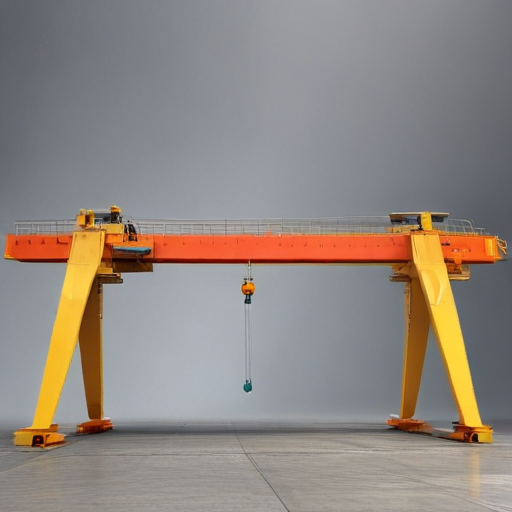
single girder semi gantry crane Accessories Upgrades and Custom Manufacturing Options
Single girder semi gantry cranes are versatile lifting solutions ideal for a range of industrial applications. Several accessories, upgrades, and custom manufacturing options can enhance their functionality and performance. Here are some key options:
Accessories:
1. Radio Remote Controls: Allow operators to control the crane from a safe distance, improving safety and operational efficiency.
2. Pendant Controls: Wired control systems for precise handling of loads.
3. Variable Frequency Drives (VFD): Provide smooth and precise control of crane and hoist speeds, reducing mechanical stress.
4. Anti-Collision Systems: Ensure safe operation in environments with multiple cranes or obstacles.
5. Load Indicators and Weighing Systems: Offer real-time load information to prevent overloading and ensure safer operations.
6. Lighting Systems: Enhance visibility in low-light conditions, boosting workplace safety.
Upgrades:
1. Extended Span and Lift Heights: Custom modifications to span lengths and lift heights can be tailored to specific requirements.
2. Advanced Safety Features: Integration of advanced safety mechanisms like emergency stop buttons, fail-safe brakes, and overload protection.
3. Energy Efficient Motors: Upgrade to energy-efficient motors to reduce power consumption and operating costs.
4. Weather-Proofing: Specialized coatings and materials for outdoor or harsh environment operations.
5. Automated Controls: Incorporate semi- or fully-automated control systems for higher efficiency and reduced labor costs.
Custom Manufacturing Options:
1. Tailored Design: Custom engineering to meet specific dimensional and capacity requirements.
2. Material Selection: Choose from various grades of steel or aluminum depending on the application needs.
3. Specialized Trolleys: Design custom trolleys for unique lifts or handling specific types of loads.
4. Paint and Finish: Customize paint and finish to improve corrosion resistance or match corporate branding.
These options considerably enhance the capability, efficiency, and safety of single girder semi gantry cranes, making them adaptable to a wider array of industrial tasks.
List Quality Control and The Manufacturing Process of “single girder semi gantry crane”
Quality Control and the Manufacturing Process of Single Girder Semi Gantry Crane
#### Quality Control
1. Material Inspection: Raw materials (steel, motors, electrical components) are inspected for compliance with industry standards.
2. Supplier Evaluation: Regular audits and evaluations of suppliers to ensure high-quality materials.
3. In-Process Monitoring: Continuous monitoring throughout the production process to ensure adherence to design specifications.
4. Non-Destructive Testing (NDT): Ultrasonic, radiographic, and other NDT methods are applied to detect internal flaws in welds and materials.
5. Dimensional Accuracy: Components are measured using precision instruments to ensure they meet design drawings.
6. Load Testing: Cranes undergo load tests to verify they can handle specified weights safely.
7. Electrical Testing: Electrical systems are tested for functionality, safety, and compliance with standards.
8. Finished Product Inspection: Final inspection includes checking welds, coatings, mechanical and electrical systems.
9. Documentation and Traceability: Detailed records of materials, processes, and testing results are maintained.
#### Manufacturing Process
1. Design and Planning: Engineers create detailed designs using software, adhering to client specifications and industry standards.
2. Material Procurement: Sourcing high-grade steel and components from approved suppliers.
3. Cutting and Shaping: Steel plates and beams are cut and shaped using CNC machines and plasma cutters.
4. Welding and Assembly: Components are welded together by certified welders. Stress-relief processes ensure structural integrity.
5. Machining: Precision machining is performed on joints and connection points for a perfect fit.
6. Surface Treatment: Components receive anti-corrosion treatments, such as galvanizing or painting.
7. Electrical Installation: Motors, control panels, and wiring are installed.
8. Final Assembly: Crane components are assembled, and mechanical and electrical systems are integrated.
9. Testing and Inspection: Comprehensive tests are conducted, including operational and load tests.
10. Packaging and Delivery: Cranes are disassembled as necessary, securely packaged, and dispatched to the client site.
By adhering to strict quality control measures and a detailed manufacturing process, single girder semi gantry cranes are produced to meet high safety and performance standards.
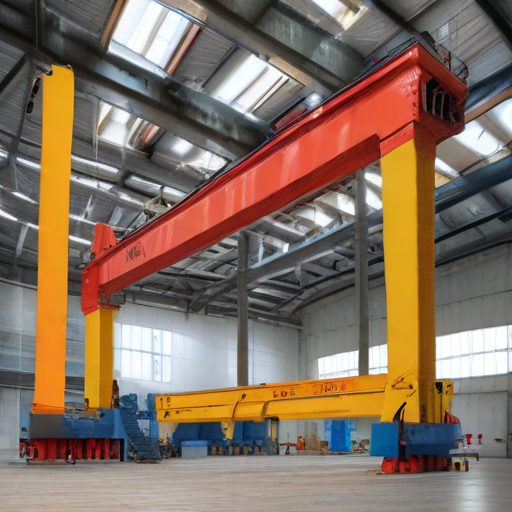
How to use “single girder semi gantry crane”
A Single Girder Semi Gantry Crane is a versatile material handling system designed for both indoor and outdoor use. Here’s a simple guide on how to use it effectively:
Pre-Operation Checklist:
1. Inspection: Perform a thorough inspection of the crane, checking for any signs of wear, damage, or malfunction. Ensure all safety mechanisms and controls are functional.
2. Environment: Clear the operation area of any obstructions and ensure the ground rail (if applicable) is free of debris.
Operation Steps:
1. Power On: Activate the crane by turning on the main power supply.
2. Controls Familiarization: Understand the control panel, including the joystick or buttons for movement controls—specifically, left/right and up/down actions.
3. Load Attachment: Secure the load to the crane’s hook using appropriate slings or lifting devices. Ensure the load is properly balanced.
4. Test Lift: Perform a test lift to make certain the load is securely attached and the crane functions smoothly without unexpected movements.
5. Lifting: Gradually lift the load to avoid any swinging or instability. Use the controls to maneuver the load horizontally along the girder and the jib arm.
6. Transporting: Move the load to the desired location, keeping the load as close to the ground as safely possible to maintain stability.
7. Lowering: Slowly lower the load to its destination while ensuring the area below is clear of personnel and other obstacles.
Post-Operation:
1. Unhook the Load: Carefully detach the load from the crane’s hook.
2. Power Off: Turn off the main power supply.
3. Inspection: Conduct a post-operation inspection to check for wear or damage incurred during use.
Safety Precautions:
– Always follow manufacturer guidelines and safety protocols.
– Ensure only trained personnel operate the crane.
– Maintain constant communication with your team, especially when moving loads.
– Never exceed the rated load capacity.
By following these steps, you ensure efficient and safe operation of the Single Girder Semi Gantry Crane.
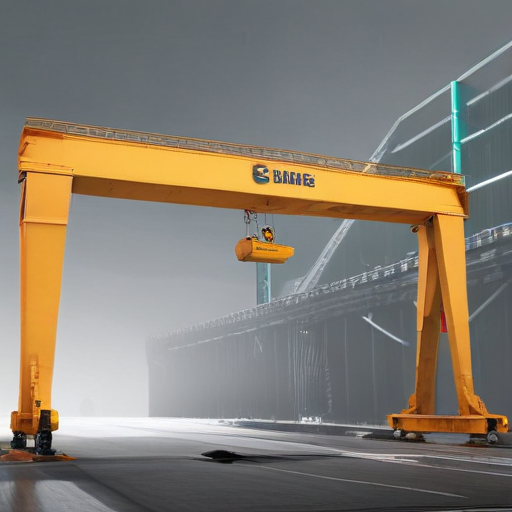
“single girder semi gantry crane” Comparative Analysis
Single girder semi gantry cranes are widely used in various industries for material handling due to their versatility and efficiency. Here, we present a comparative analysis based on key factors such as design, capacity, cost, maintenance, and application.
Design: Single girder semi gantry cranes have a simple structure with a single girder supported by a set of legs on one side and a rail on the other. This design allows them to be installed in limited spaces where traditional cranes cannot fit.
Capacity: These cranes typically handle moderate loads, generally up to 20 tons. While they are not suitable for extremely heavy-duty applications, they are ideal for medium-weight load handling requirements.
Cost: The single girder configuration and the semi gantry setup, which only requires partial support, make these cranes more economical to install compared to full gantry cranes or double girder systems.
Maintenance: Maintenance for single girder semi gantry cranes is generally straightforward due to their simplicity. This includes regular inspection of the girder, hoist, and support legs, making them cost-effective in long-term operation.
Application: Perfect for production halls, warehouses, and assembly workshops where space constraints are evident, these cranes are commonly found in environments needing efficient, yet less intensive material handling. They are also useful in outdoor settings for tasks such as loading and unloading in small to medium-scale construction projects.
Comparison to Alternatives:
– Full Gantry Cranes: More suited for outdoor or heavy-duty tasks but require more space and are costlier.
– Double Girder Cranes: Offer higher capacity and greater span but are more complex and expensive to maintain and install.
– Overhead Cranes: Ideal for indoor spaces with no floor-level obstructions but need significant headroom and robust support structures.
In summary, single girder semi gantry cranes offer a balanced solution of cost, efficiency, and versatility for medium-load applications, making them a practical choice for industries with space constraints and moderate weight handling requirements.
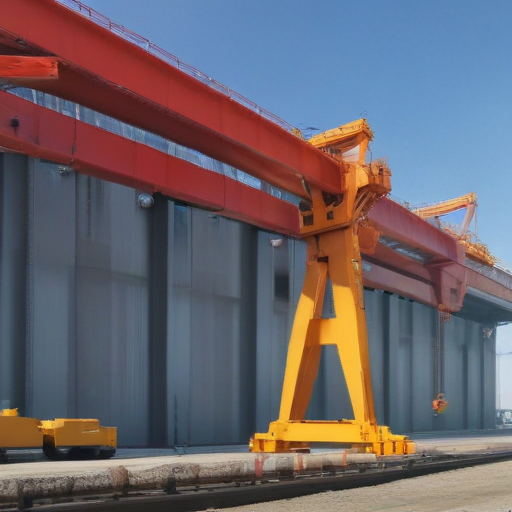
“single girder semi gantry crane” Warranty and Support
Warranty and Support for Single Girder Semi Gantry Crane
Warranty:
Our single girder semi gantry cranes come with a comprehensive warranty designed to ensure your peace of mind and operational efficiency. The warranty period typically lasts for 12 months from the date of installation or 18 months from the date of shipment, whichever comes first. This warranty covers defects in materials and workmanship under normal use and service. We commit to repairing or replacing any defective parts at no additional cost. Please note that the warranty does not cover issues arising from unauthorized modifications, misuse, or inadequate maintenance.
Support:
Customer satisfaction is our top priority, which is why we offer robust support services for our single girder semi gantry cranes. Our dedicated support team is available 24/7 to assist with any technical or operational queries. You will have access to:
1. Installation Services: Professional assistance to ensure safe and efficient installation.
2. Training: Comprehensive training programs for your staff to maximize crane operation and maintenance.
3. Maintenance Plans: Customized maintenance schedules that enhance the crane’s lifespan and performance.
4. Spare Parts Availability: Quick access to genuine spare parts to minimize downtime.
5. Emergency Services: Rapid response for urgent repair needs, ensuring minimal disruption to your operations.
We also offer remote diagnostics and support, allowing us to troubleshoot and solve issues without delay. Our global network of service centers ensures that support is always within reach, no matter where your operations are located.
With our warranty and support services, you can be confident that your single girder semi gantry crane will deliver superior performance and reliability for years to come.
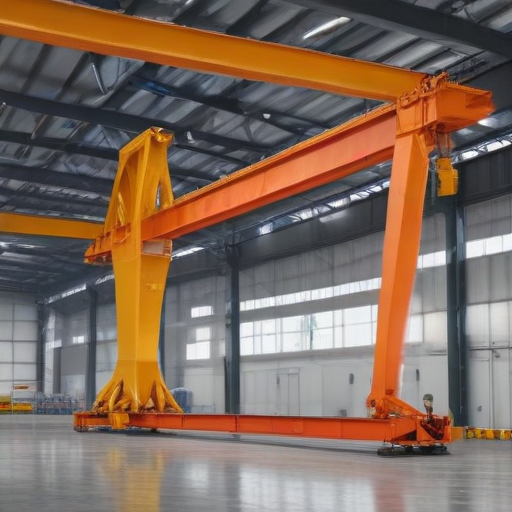
List “single girder semi gantry crane” FAQ
Sure! Here are some frequently asked questions (FAQs) about single girder semi gantry cranes:
Single Girder Semi Gantry Crane FAQ
1. What is a single girder semi gantry crane?
A single girder semi gantry crane is a type of crane that has one primary horizontal beam (girder) and one leg running on the ground, while the other side runs on an elevated rail.
2. What are typical applications?
These cranes are commonly used in factories, assembly lines, warehouses, and outdoor yards for lifting and moving heavy loads.
3. How is it different from a full gantry crane?
Unlike a full gantry crane that has two legs, a semi gantry crane has one leg. This makes it suitable for operations where space or structural constraints exist.
4. What are its load capacities?
The load capacity varies, but they generally range from 1 ton to 20 tons, depending on the design and manufacturer.
5. What span lengths are available?
Span lengths can vary widely but typically range from 5 meters to 20 meters. Custom spans can be designed as per specific requirements.
6. What are the main benefits?
– Cost-effective compared to full gantry cranes
– Provides flexibility in areas with limited space
– Easier to install and maintain
7. What types of industries use these cranes?
Industries such as manufacturing, construction, shipbuilding, and automotive often utilize these cranes for material handling.
8. How is it powered?
These cranes are usually electrically powered, but manual or hydraulic options are also available.
9. What safety features are included?
Safety features can include emergency stop buttons, overload protection, limit switches, and anti-collision devices.
10. How do you maintain it?
– Regularly inspect for wear and tear
– Lubricate moving parts
– Check electrical systems
– Replace faulty or worn-out components promptly
11. Are they customizable?
Yes, manufacturers often offer custom solutions to fit specific operational needs.
By addressing these FAQs, businesses can better understand the functionality and benefits of single girder semi gantry cranes, aiding in making informed purchasing decisions.
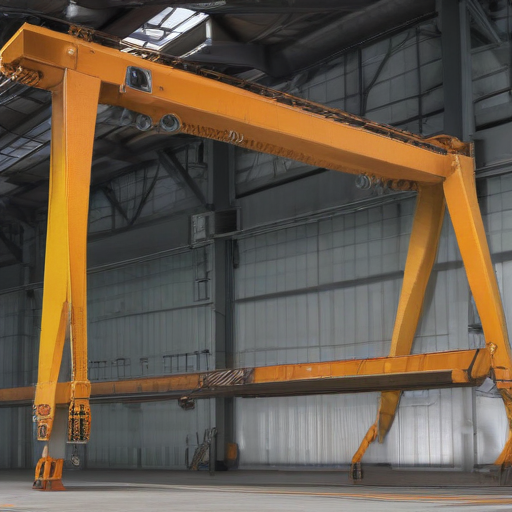
Top 10 FAQ with answer about single girder semi gantry crane for Buyer Sourcing from China
Certainly! Here’s a concise list of the top 10 frequently asked questions (FAQ) about sourcing single girder semi-gantry cranes from China, complete with answers:
1. What is a single girder semi-gantry crane?
– It’s a type of crane with a single beam (girder) and one leg running on the ground track, while the other side runs on a runway beam along the wall.
2. What industries use single girder semi-gantry cranes?
– Common industries include manufacturing, warehousing, material handling, logistics, and construction.
3. What are the typical load capacities?
– Load capacities generally range from 1 ton to 20 tons, but custom designs can handle higher weights.
4. How is the quality ensured in Chinese manufacturing?
– Many Chinese suppliers comply with international standards like ISO, CE, and offer quality inspections, and certificates.
5. How long is the lead time for a crane from China?
– Standard models typically have a lead time of 30-60 days, while custom orders might take longer.
6. What is the typical lifespan of these cranes?
– With proper maintenance, single girder semi-gantry cranes can last 20-30 years.
7. What after-sales services are available?
– Chinese suppliers often provide remote technical support, on-site installation assistance, and spare parts supply.
8. How is shipping organized?
– Most suppliers handle the logistics and shipping arrangements, but it’s crucial to discuss and finalize shipping terms (FOB, CIF, etc.).
9. Are there language barriers when dealing with Chinese suppliers?
– Many manufacturers have English-speaking staff and dedicated export departments to facilitate communication.
10. What costs should be considered apart from the crane price?
– Additional costs may include shipping, customs duties, installation, and potential modifications to existing infrastructure.
By addressing these key questions, buyers can make more informed decisions when sourcing single girder semi-gantry cranes from China.

